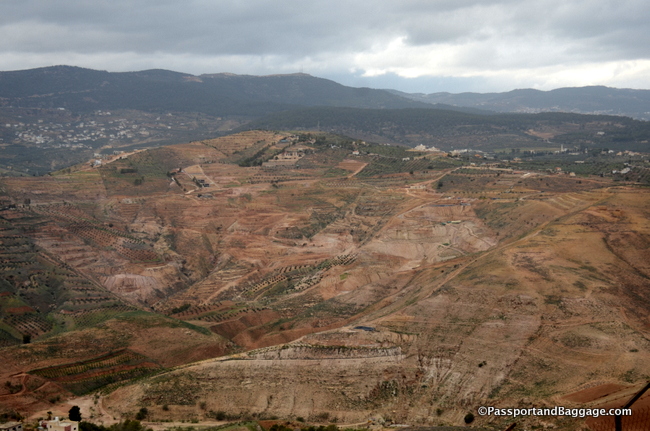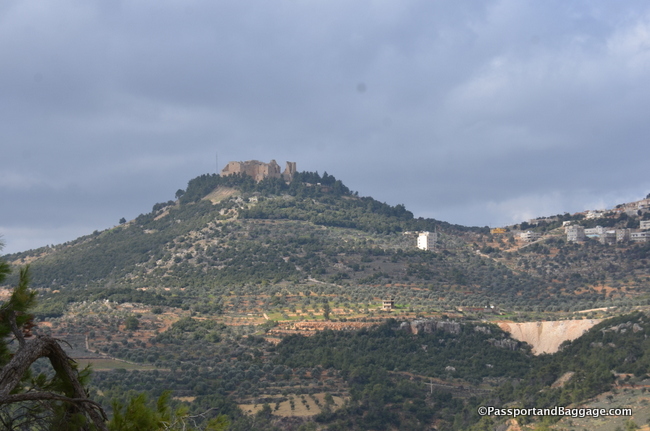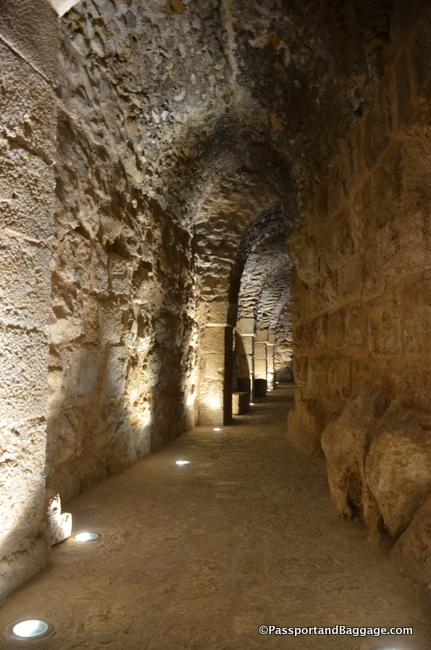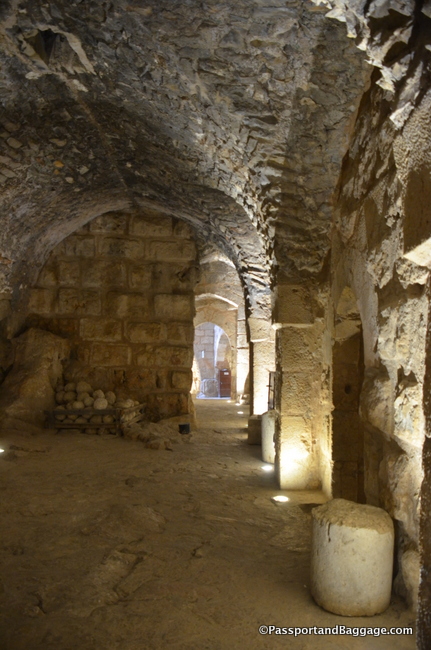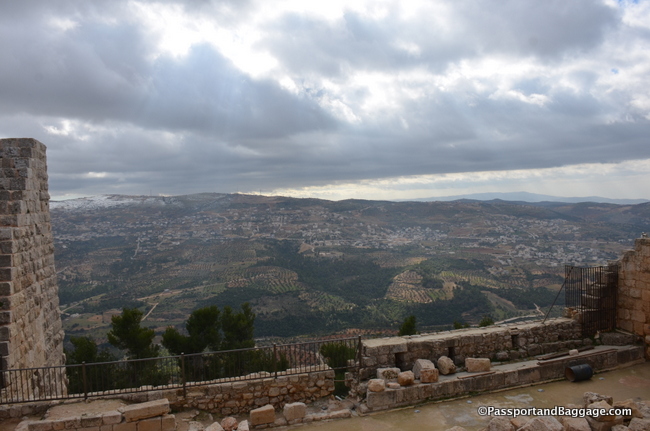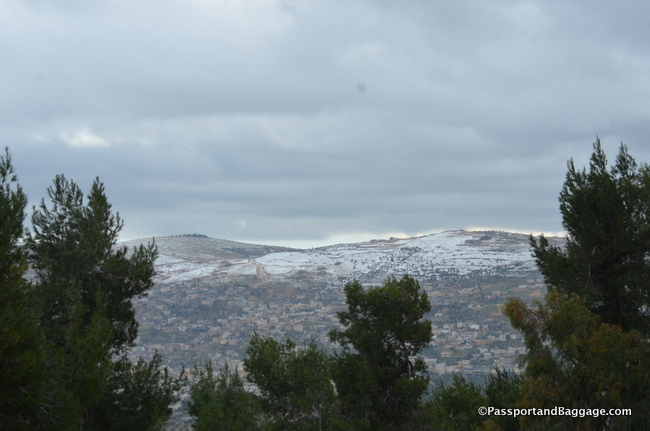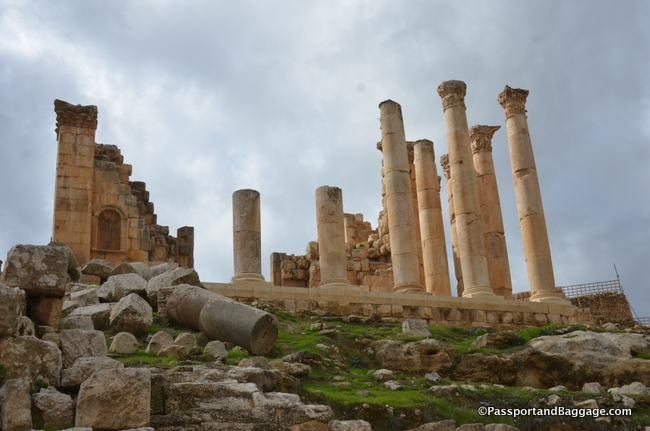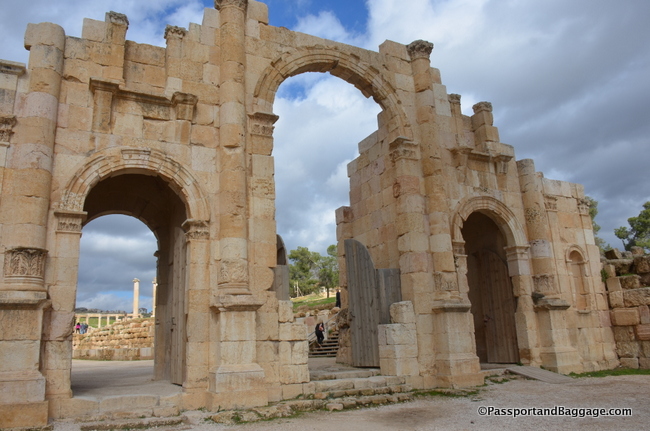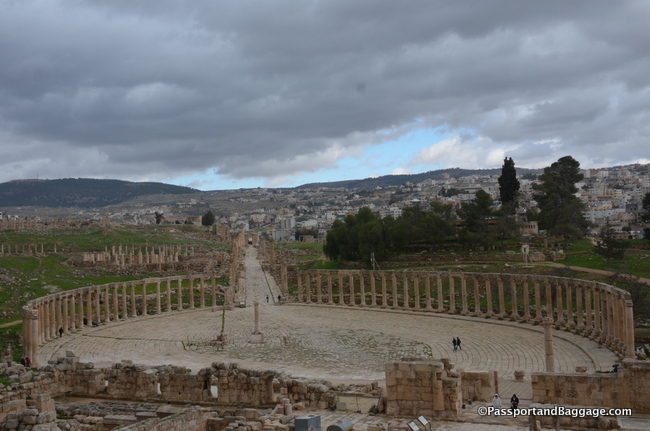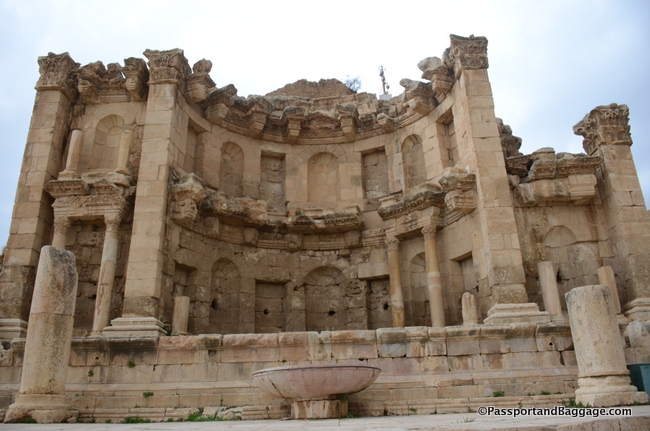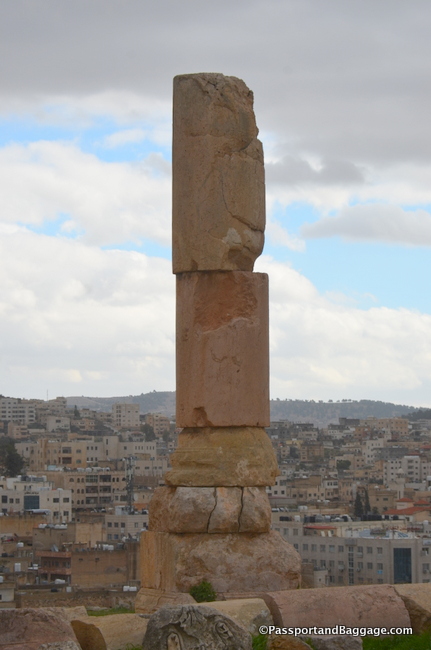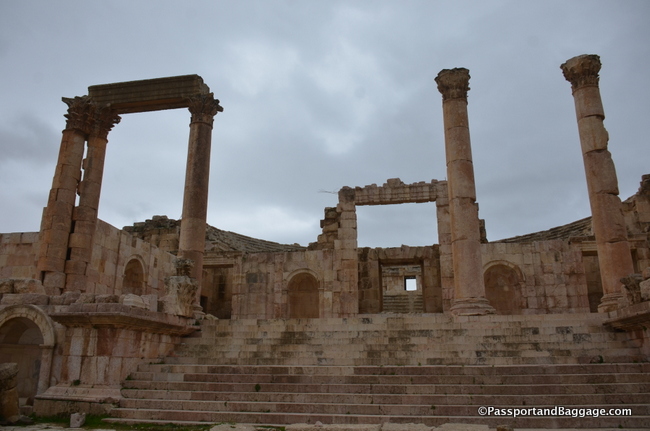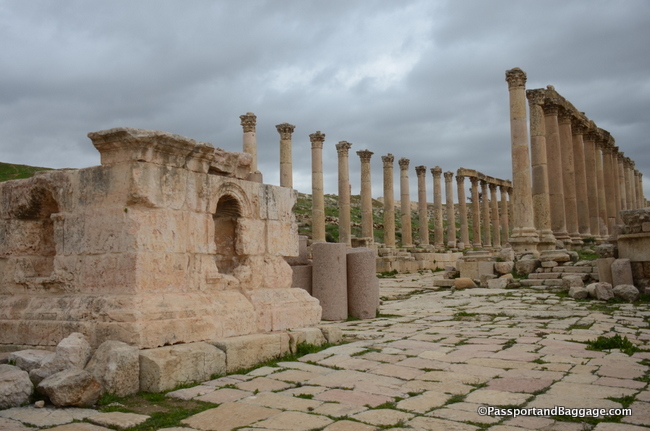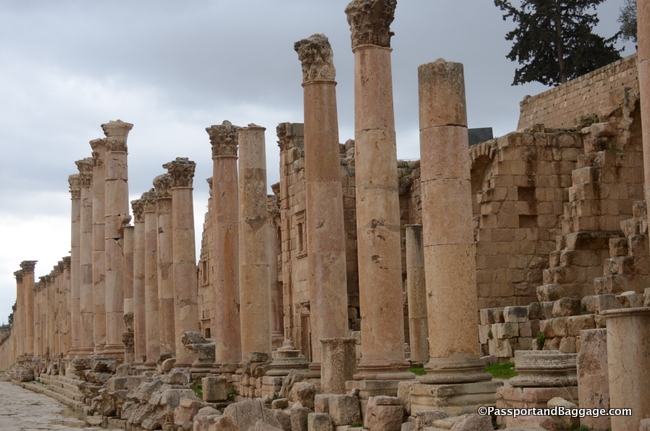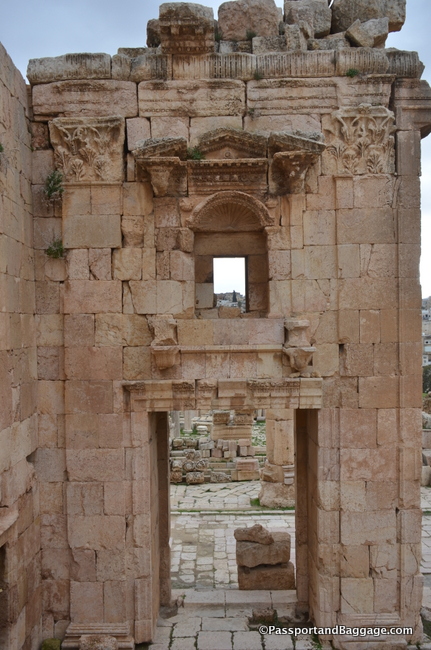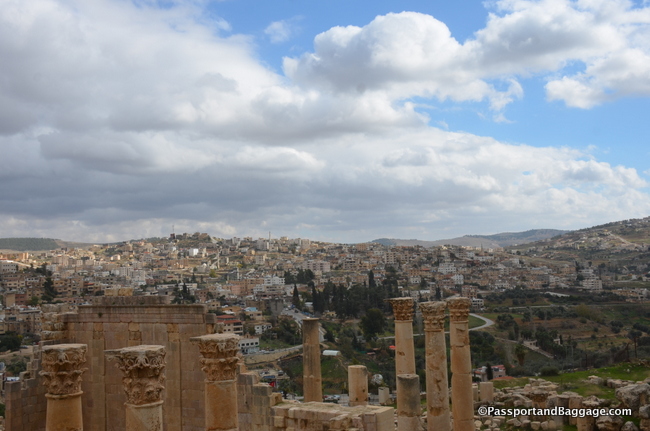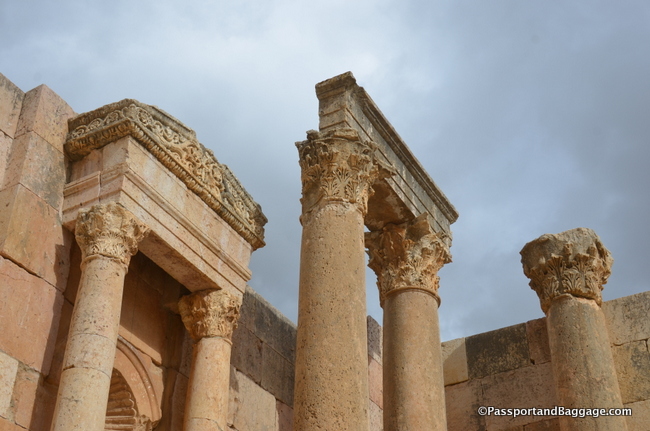One hour outside of Amman
January 8, 2019
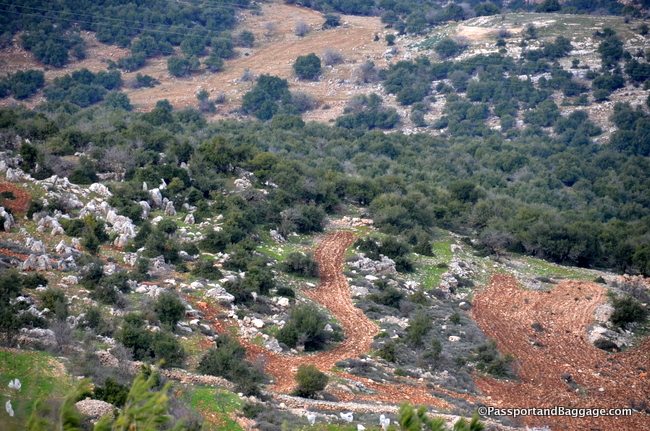 Today I visited the Ajlun Castle and Ancient Jerash. The one hour drive to this area was very eye opening. The entire drive goes through the hills, some high enough to have a dusting of snow. The foliage is very reminiscent of California, with miles and miles of olive trees and pines, juniper and oaks scattered along the way.
Today I visited the Ajlun Castle and Ancient Jerash. The one hour drive to this area was very eye opening. The entire drive goes through the hills, some high enough to have a dusting of snow. The foliage is very reminiscent of California, with miles and miles of olive trees and pines, juniper and oaks scattered along the way.
The soil is chalky in many areas and heavy with iron oxide, the drive was absolutely beautiful.
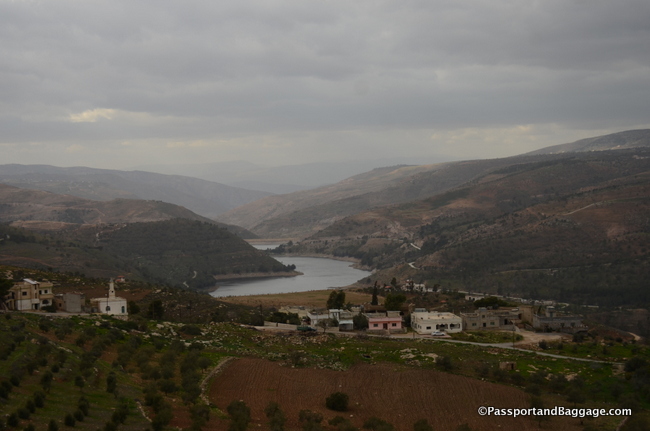
To increase the water supply in this arid country they are building ‘dams’, to make lakes, to capture the rainwater
Ajlun Castle
Ajlun Castle is located atop a hill that gives a view of not only the surrounding countryside but three major wadis that lead into the Jordan Valley. It also sits on the site of an old monastery. It was renovated as a fort in 1184, in the midst of the Crusades, by Izz al-Din Usama, a general in the army of Saladin. This fort was able to control traffic along the important trading road connecting Damascus and Egypt. Ajlun Castle is, therefore, one of the very few Muslim fortresses built by the Ayyubids to protect their kingdom against Crusader incursions. The fort also protected the iron mines in the nearby hills and helped to quell troubles between the Bedouin clans in the area.
The fort was rebuilt after being ransacked by invading Mongols in 1260. Ottoman troops garrisoned here during the 17th and 18th centuries. Two earthquakes, 1837 and 1927, caused considerable damage, but much restoration has taken place.

The castle was also one, in a chain, of beacons which could transmit news by pigeon post from the Euphrates frontier to Cairo headquarters in twelve hours.
The stonework in the castle was so spectacular that most of my photos are of just that.
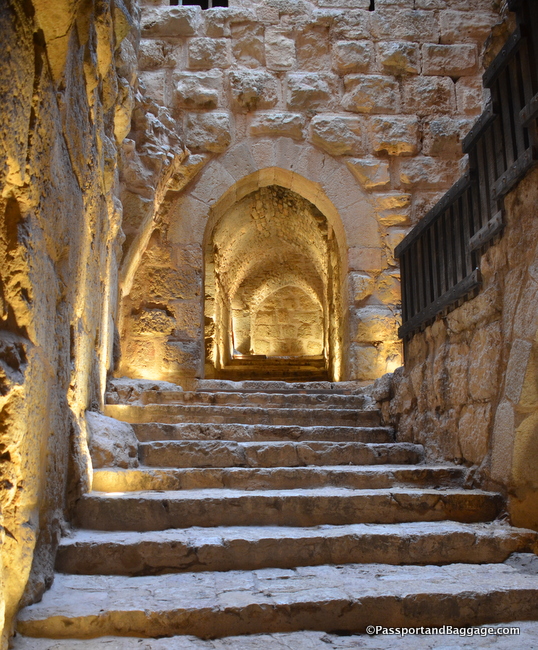 There are two stories regarding the name. One is that the word ‘Aljun’ is a Semitic/Aramaic name from the root “ajal” which refers to a round sloping place. Apparently, there was also a 9th century BCE Moabite king named Ajln. However, the Byzantine era records that Ajlun is in reference to a priest who resided in a monastery on the top of ‘Mount Awf’ which is where the castle sits today.
There are two stories regarding the name. One is that the word ‘Aljun’ is a Semitic/Aramaic name from the root “ajal” which refers to a round sloping place. Apparently, there was also a 9th century BCE Moabite king named Ajln. However, the Byzantine era records that Ajlun is in reference to a priest who resided in a monastery on the top of ‘Mount Awf’ which is where the castle sits today.
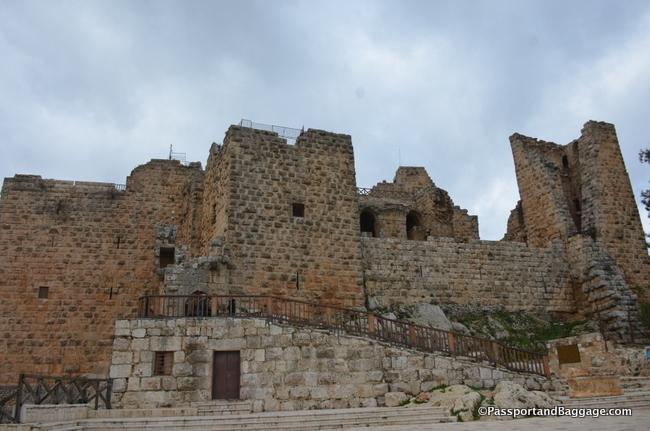
*
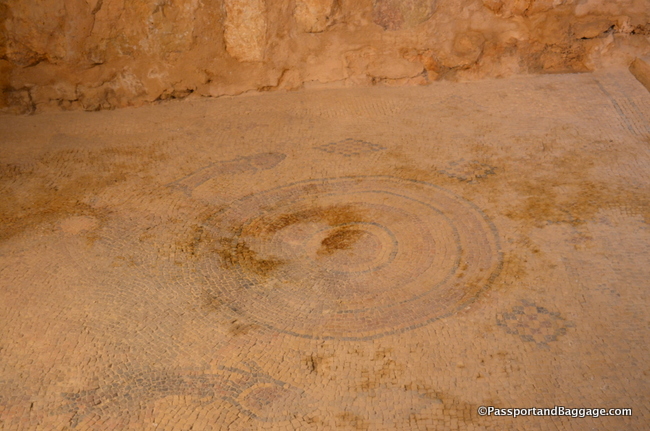
A mosaic on the floor of the old monastery with a loaf of bread and two fish. It also contains a Greek inscription dedicated to Deacon Aryano.
Ancient Jerash
Jerash is considered the most well-preserved sites for ancient Roman architecture outside of Italy. The amphitheater, arches, and plazas are in excellent condition due to the dry climate it is located in. It was hidden for centuries under the desert sand and has been excavated only in the past century.
I spent over two hours here quietly walking around and photographing almost every square inch. I was overwhelmed by the state of the place, but more importantly the size, it covers about 200 acres.
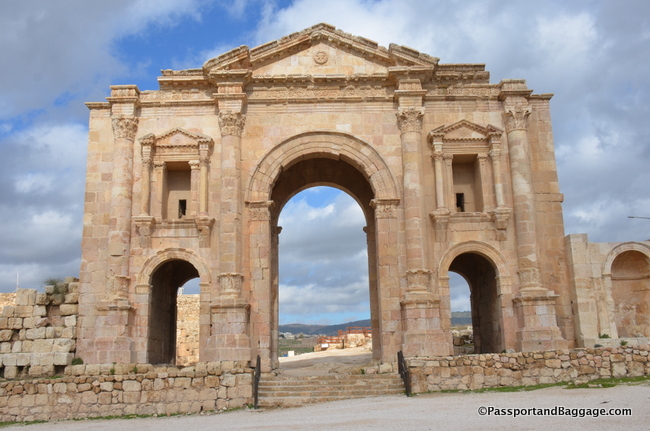
This stunning and overpowering welcoming gate was built to honor the visit of Roman Emperor Hadrian to Jerash in 129/130 CE. The two niches at the top would have held statuary
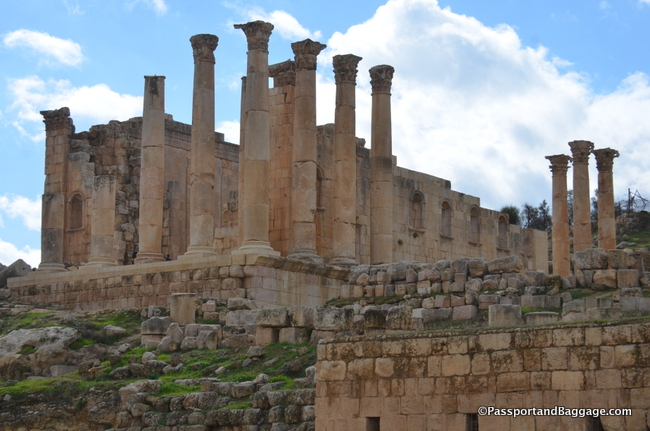
Built in AD 162 over the remains of an earlier Roman temple, the Temple of Zeus was once approached by a magnificent stairway leading from the temenos (sacred courtyard).
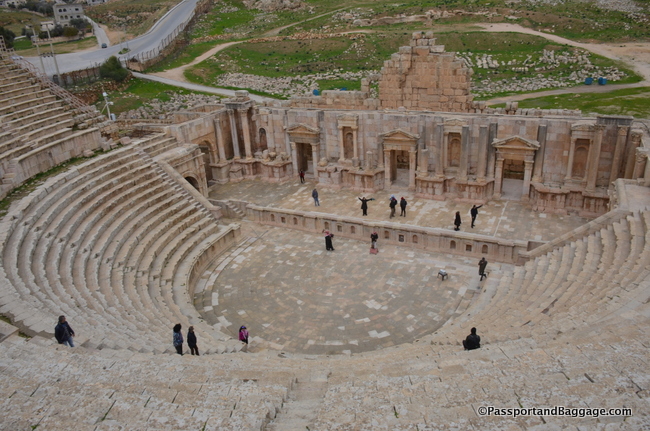
Built between 81 and 96 CE this South Theater could hold 5000 spectators in its two stories of seating (only one tier of which remains).
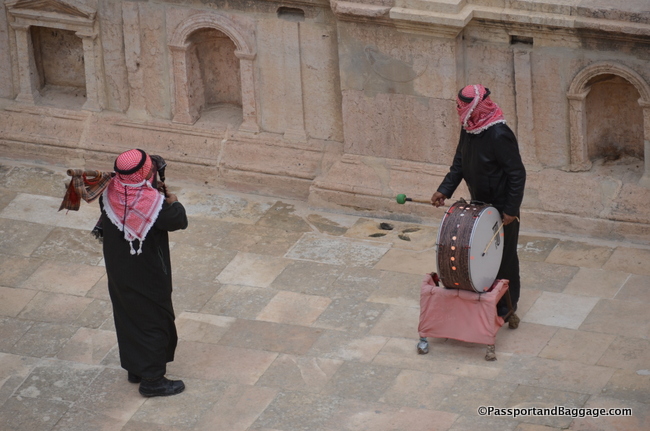
The south theater has amazing acoustics as the Jordanian Bagpipe player and drummer were happy to show off for a small tip
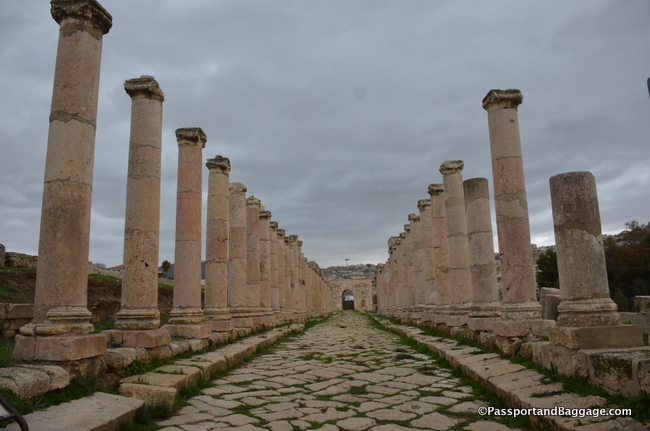
The Cardo Maximus, the city’s main thoroughfare, is 875 yards to the North Gate (Trajan’s Gate), the street is still paved with its original stones, rutted by the wheels of chariots.
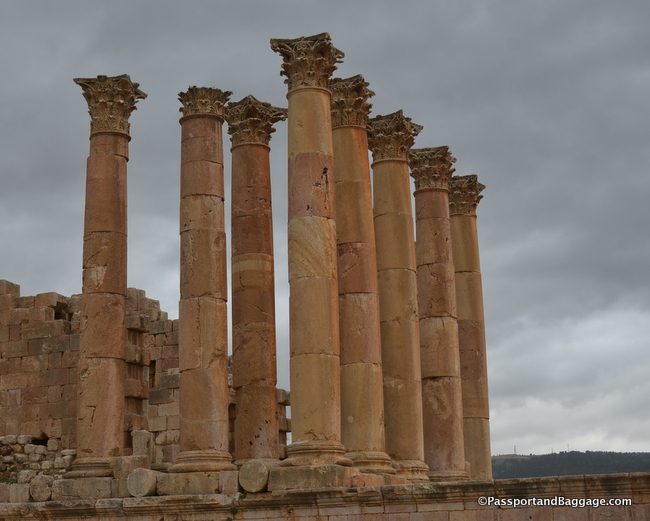
The Temple of Artemis was dedicated to the patron goddess of the city but was dismantled to provide masonry for new churches under Theodorius in 386.

The North Tetrapylon. Tetrapylon means ‘four gates’ and is usually square-shaped structure with a gate on each side
I am like a kid in a candy shop when it comes to Roman ruins, Roman history, and Roman architecture. Today was a very special day for me to wander and take photographs to my heart’s delight. The site is very well marked, with excellent historic descriptions. The space is so large, that at least during the low season, the people were spread out enough to enjoy many of the spaces alone.
January is Jordan’s low season. It is much colder than one would expect, but it is not crowded.
